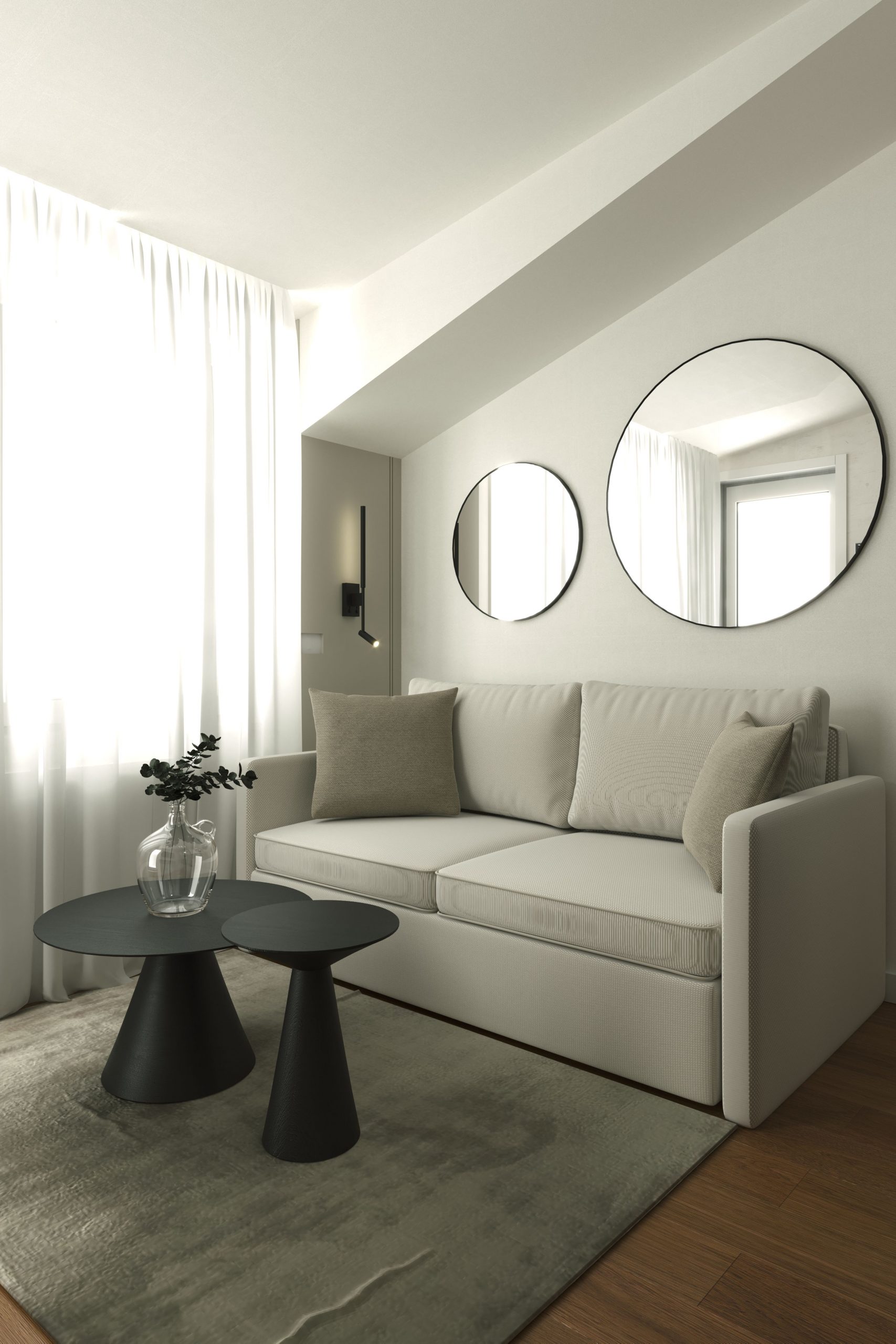In contemporary interior design, light is no longer just a functional necessity – it has become a key element in shaping atmosphere, spatial perception, and emotional experience. Glass prisms, an architectural detail with a rich history in public and industrial buildings, are now making a strong comeback in residential interiors. They have the ability to refract and softly diffuse natural light, creating a sophisticated effect while maintaining privacy. This makes them an ideal solution for spaces that seek a balance between functionality and expressive aesthetics..

In this guide, we explore everything you need to know about using glass prisms(glass blocks)in interior design – how they work, where it’s smart to place them, the different types available, how they’re installed and maintained, and the advantages they offer in terms of energy efficiency and the visual identity of a space.
If you’re looking for a solution that brings light, character, and architectural sophistication into your home, keep reading.
- What are glass prisms and why are they trending again?
- Key advantages of glass prisms in interior design
- Types of glass prisms and design variations
- Step-by-step installation of glass prisms
- Frequently Asked Questions (FAQ)
- Inspiring interiors with glass prisms
- Maintenance and long-term durability
- Cost and return on investment
- If this still feels overwhelming…
- Conclusion by Architaur
What are glass prisms and why are they trending again?
Historical overview
Glass prisms originated in the early 20th century, primarily as part of the industrial revolution and a new era in architecture. Popularized through the work of great innovators such as Ernest R. Luxfer, prisms were used to direct and diffuse light into buildings, maximizing the use of daylight even in interior spaces without windows or with limited access to natural light.

Modern design and functions
Today, glass prisms are valued for their unique ability to let in light while maintaining privacy. Unlike traditional glass walls, prisms perfectly refract and distribute light evenly, eliminating direct glare and harsh shadows. These qualities make them an ideal solution for apartments, offices, bathrooms, partitions, and unique interiors that require subtle, diffused lighting.
Key advantages of glass prisms in interior design
Natural lighting without glare
Another major benefit of using glass prisms is their ability to bring soft, diffused light into any space. The light is scattered in multiple directions, making the room brighter while protecting it from direct sunlight that can create hot spots and glare on screens or work surfaces. This important advantage enhances both the quality of life and the productivity of those using the space.
Privacy and aesthetic function
The design structure of the prisms disrupts direct visibility through them, making glass prisms an ideal choice for areas where privacy is essential—such as bathrooms, office partitions, or entrance spaces. Their transparency, combined with a “frosted” effect, creates an atmosphere of openness and light without compromising privacy.
Sound and thermal insulation of glass prisms
Thanks to their thick and complex structure, glass prisms provide excellent thermal insulation and soundproofing. Especially when combined with advanced sealing systems, they can significantly reduce noise penetration and heat loss, contributing to the overall energy efficiency of a home or office space.
Ecological and economic sustainability
Using natural light through glass prisms reduces the need for artificial lighting and climate control systems, leading to energy savings and lower costs.
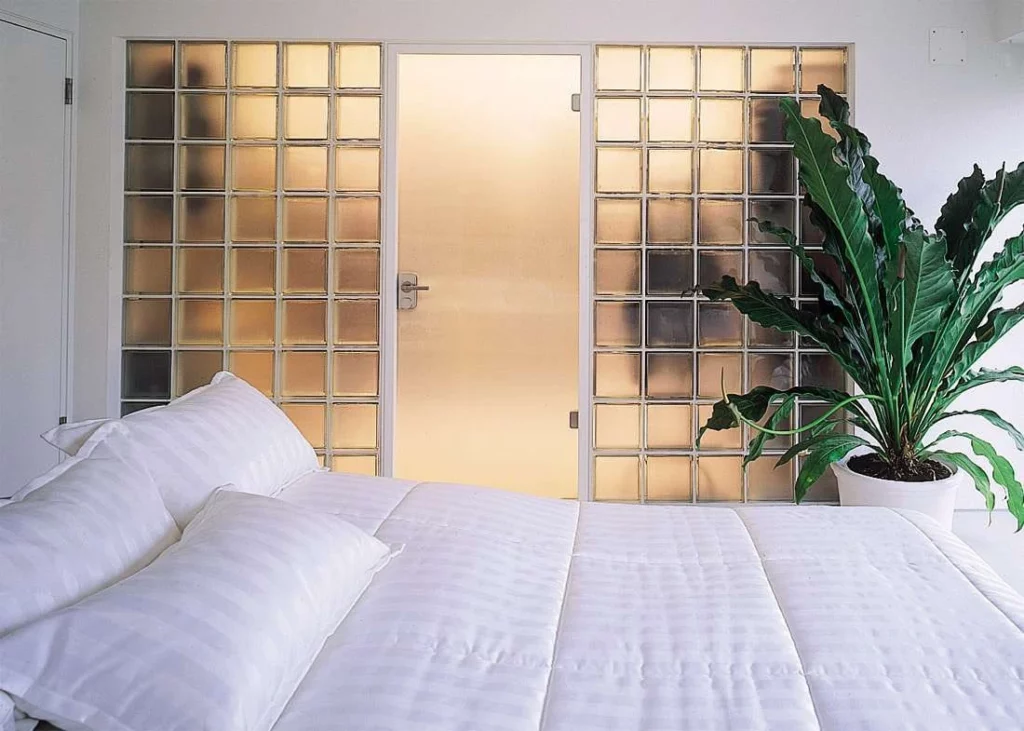
Types of glass prisms and design variations
Classic transparent blocks
These blocks are defined by their clarity and ability to integrate effortlessly into neutral, minimalist interiors, highlighting modernity and brightness. They are ideal for projects where maximizing light with minimal decorative influence is essential.

Colored and textured glass prisms
For those looking to add an extra dimension to their design, prisms are available in a variety of colors and textures. They can be frosted, ribbed, embossed, or feature embedded patterns,allowing light to transform into a play of shadows and colors, creating a decorative effect tailored to the space.
Energy-efficient glass prisms
The latest prism models are designed with a strong focus on thermal insulation. With U-values around 0.17 W/m²K, these glass blocks are ideal for energy efficiency and can be used in passive
Special shapes and custom dimensions
In addition to classic square blocks, rectangular and modular shapes are also available for specific design challenges. They can be integrated into curved walls or used to create interesting geometric gaps and patterns.

Step-by-step installation of glass prisms
Preparing the opening and reinforcement
Installing glass prisms begins with precise preparation of the wall opening, which must be free of moisture and debris. Reinforcement—usually made of steel—is then placed and carefully leveled, as it will support the weight of the blocks and ensure the wall’s stability.
Masonry with mortar: the traditional method
The traditional method of installing prisms involves using a special adhesive or cement mortar to fill the joints between the blocks. This process requires precision in alignment and grouting to ensure the wall is durable, sealed, and visually consistent. The spacing between glass blocks should be between 10 and 12 mm..
QuickTech system: fast and modern technology
For professionals seeking a fast and perfectly sealed construction, the QuickTech system offers the installation of prisms on special metal frames with quick-drying joints. In addition to this technique, the EasyGlass System and Vitralock methods are also commonly used for glass prism installation. If you decide to take on the challenge of assembling the blocks yourself, you can find a more detailed guide in this article.

Najčešća pitanja (FAQ)
How are glass prisms maintained?
Glass prisms require minimal maintenance. Occasional cleaning with mild glass cleaners and water using a sponge will remove dust and dirt, while checking the joints every 2–3 years is recommended to ensure seal integrity.
Are glass prisms resistant to damage?
Thanks to their structure and glass composition, prisms are highly durable. However, unlike solid walls, they are not designed to withstand strong impacts. Under normal residential use, they are considered safe and long-lasting.
What style do glass prisms belong to?
Although often associated with modernism and industrial architecture, glass prisms actually fit easily into almost any interior style. In minimalist spaces, they add texture without unnecessary detail; in retro settings, they evoke the golden age of mid-20th-century architecture; while in contemporary homes, they serve as a subtle accent that breaks the monotony of flat wall surfaces.
Their neutral form and ability to work with light, not against it make them a universal design solution – whether you prefer Scandinavian simplicity, Mediterranean warmth, or urban rawness.
Inspiring interiors with glass prisms
Below, we present a gallery of successful interior examples where glass prisms have added extra value to the space:
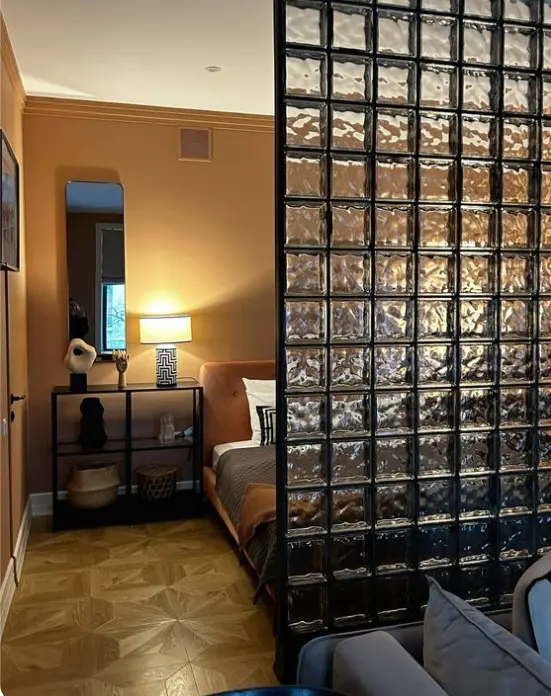
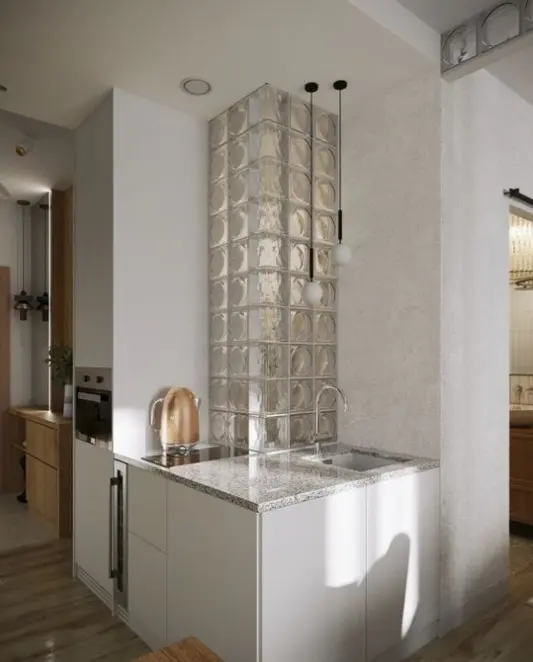
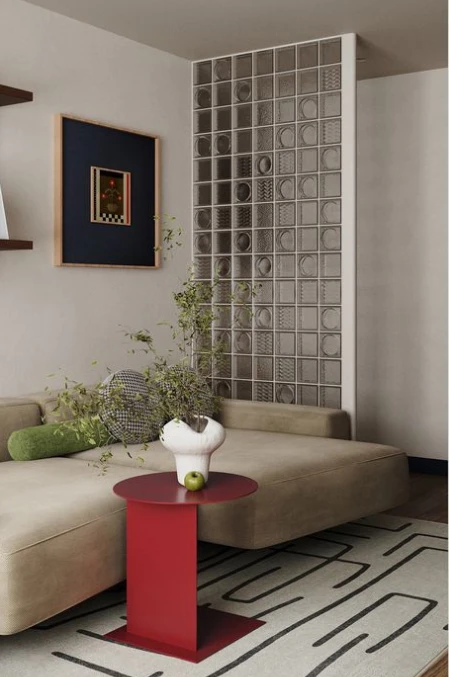
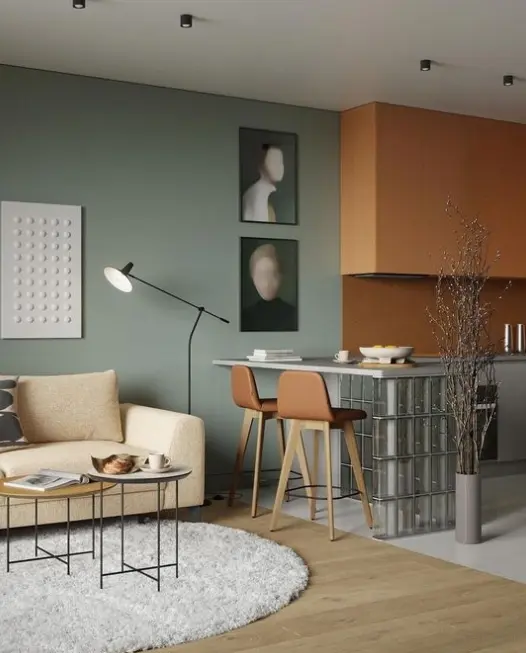
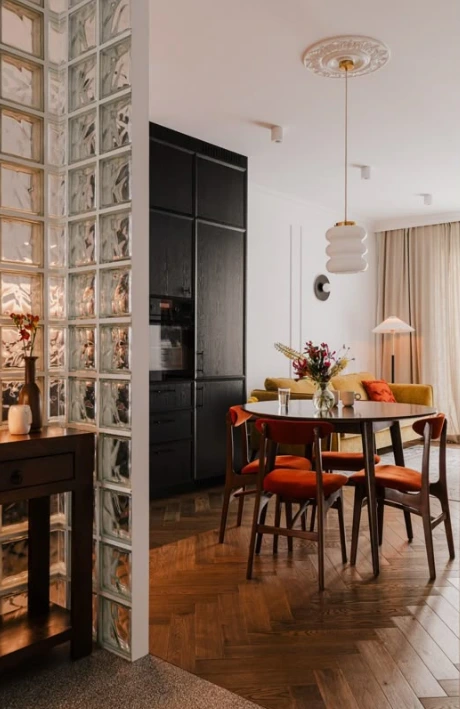
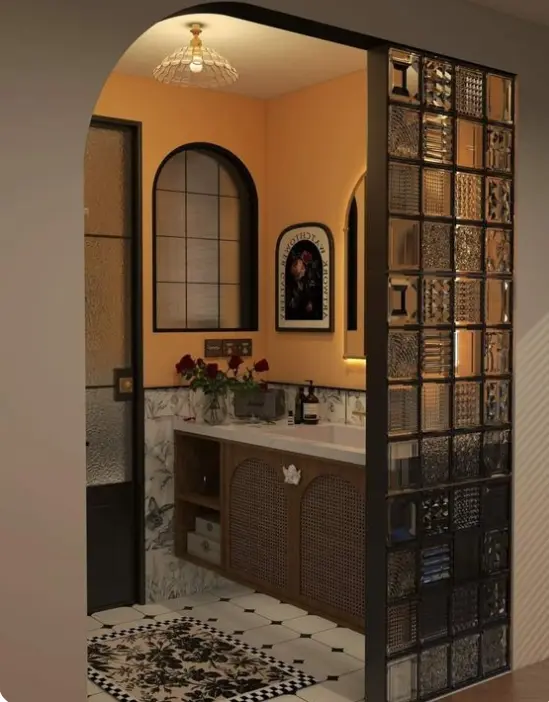
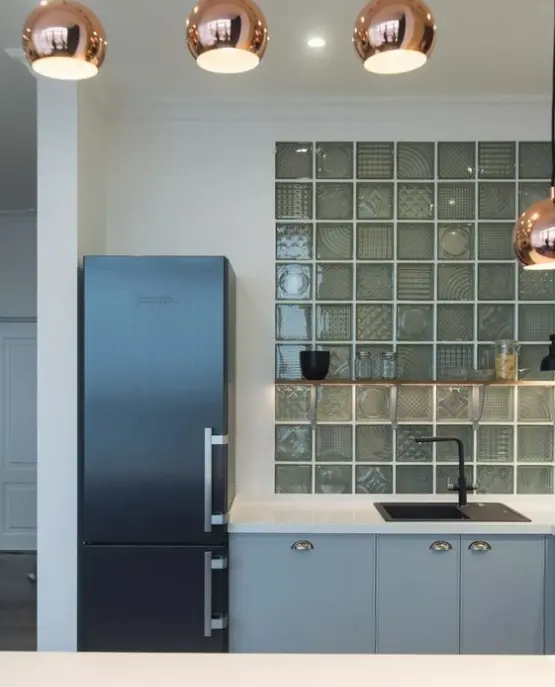
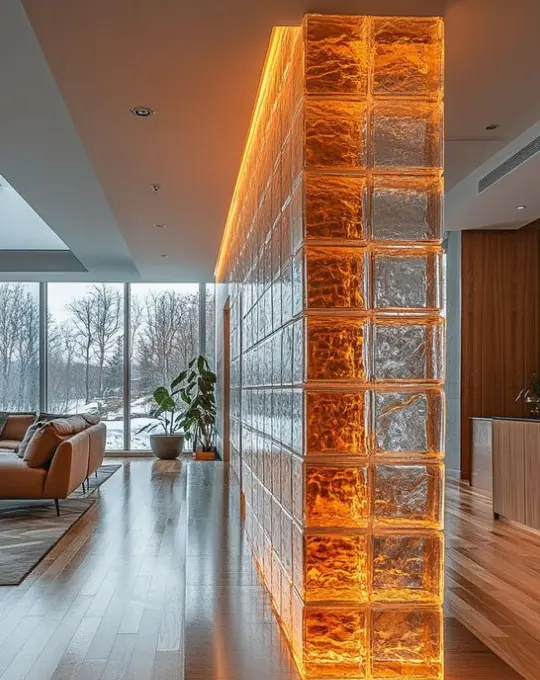
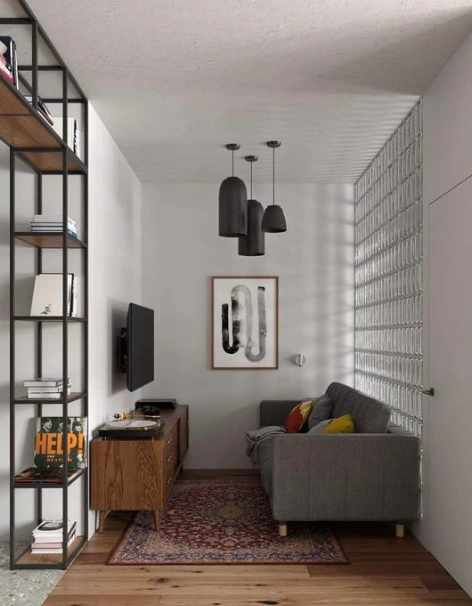
If you want to enhance your space with glass prisms but aren’t sure how to do it in the best possible way, schedule a consultation with an architect.
Maintenance and long-term durability
Glass prisms are materials that can last for decades without losing their functionality if properly maintained. Regular cleaning and inspection of joints are essential, especially in areas with high humidity. Proper installation and high-quality materials ensure that a prism wall will maintain its strength and insulation properties for many years.
Cost and return on investment
Although the initial investment in building glass prism walls is usually higher than for traditional walls, the long-term benefits are numerous:
- Reduced electricity costs thanks to natural lighting
- Lower heating bills due to improved insulation
- Increased property value as a result of attractive and functional design
Prices generally range between 2–4 EUR per piece,while installation costs around 1 EUR per piece (as of June 2025).
If this still feels like too much…
If you conclude that your space or budget doesn’t allow for the installation of glass prisms in walls, that doesn’t mean you have to give up their effect. Glass prism lamps, which are currently making a strong comeback in interior design, can bring a similar sense of refracted light and visual play—without any construction work. Whether it’s floor lamps or smaller table lamps that transform the atmosphere of a room with every switch-on, these glass prism lamps are details that easily become the centerpiece of attention.
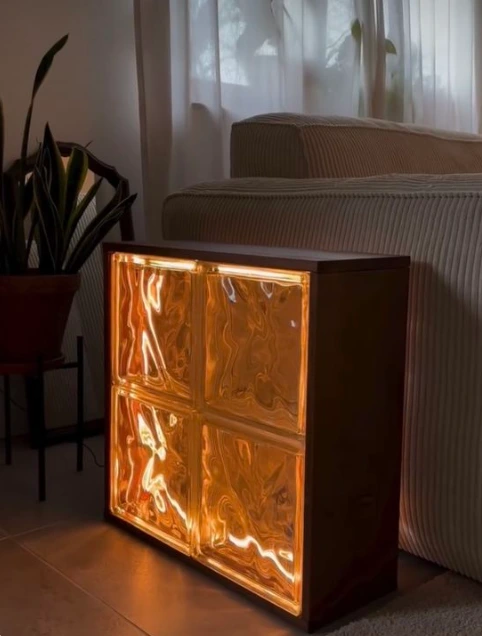
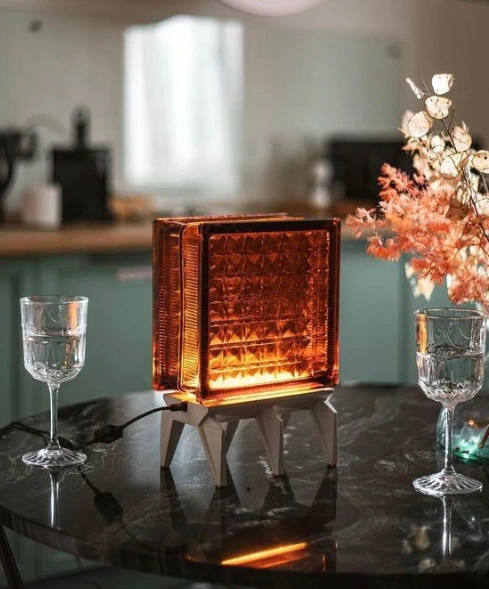
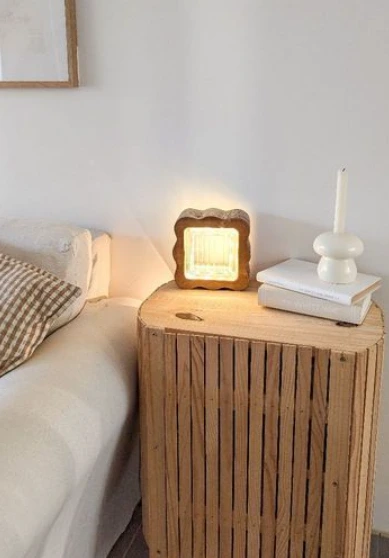
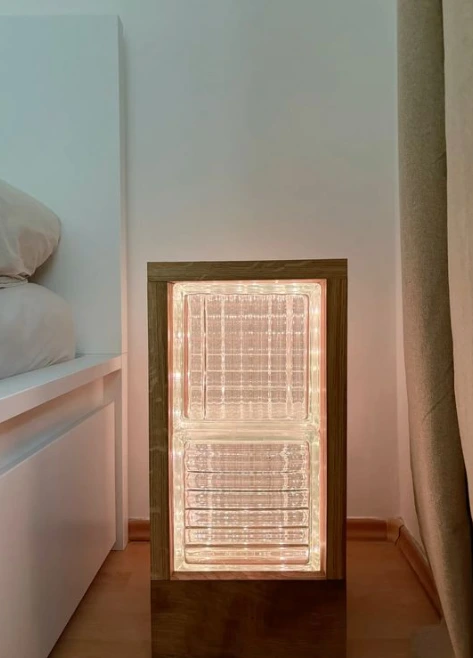
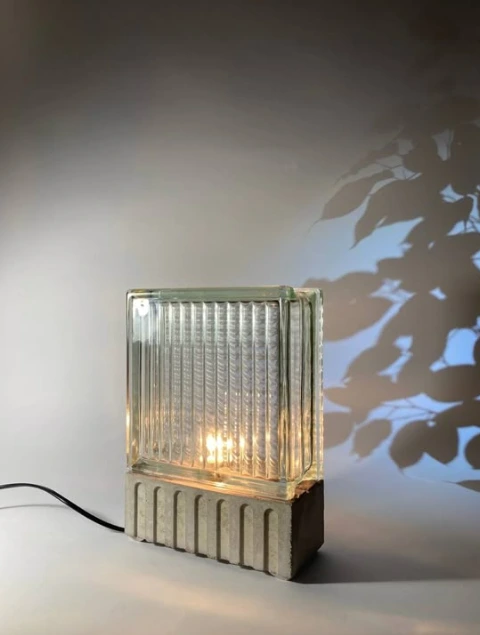
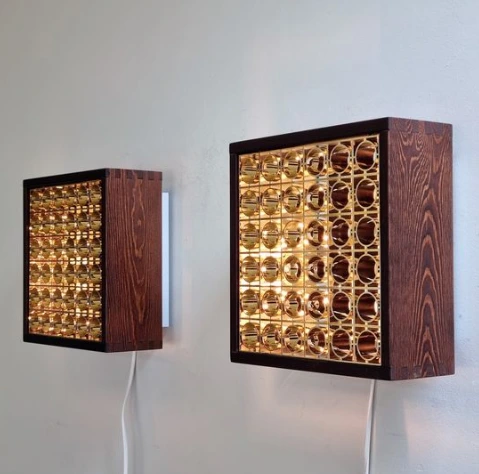
Conclusion by Architaur
Glass prisms are not just walls. They are a way to shape, direct, and retain light exactly where it’s needed most—without compromising privacy. Their role in a space goes far beyond pure functionality. They bring rhythm, movement, and a sense of openness without exposing the interior to the outside world.
In an era where spaces are expected to be thoughtful, durable, and energy-efficient, details like glass prisms become quiet yet powerful agents of change. If you’re looking for a solution that doesn’t demand attention but certainly deserves it—you may have just found it.


